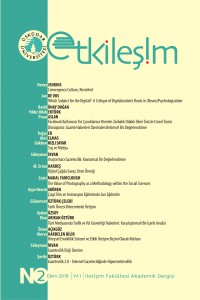Abstract
Photography is becoming an increasingly valuable tool for researchers who wish to explore social issues. It can provide valuable data for a researcher and insights that are not possible through more traditional qualitative research methodologies. The development of ‘visual sociology’ as a recognised branch of sociological research shows that photography is becoming an increasingly important methodological tool within the social sciences. This study sets out the main theoretical developments, including around the role of the researcher within the research process, that have allowed photography to become such a valuable aspect of social science research. It explores also the different methodologies that can be adopted by photographers within a social science research project. By providing examples of research conducted by the author around migration and gentrification, this study aims to demonstrate the value of photography within a research context. It discusses the main issues that arise when photographers work on social science projects, particularly around authenticity and ethics.
References
- Becker, H. (1978). “Do Photographs Tell the Truth?”. Afterimage. 5. 9-13.
- ___________ (ed) (1981). Exploring Society Photographically. Chicago: University of Chicago Press.
- Bruzzi, S. (2000). New Documentary: A Critical Introduction. London: Routledge.
- Collier, J. and Collier, M. (1986). Visual Anthropology: Photography as a Research Method. (originally published 1967). Albuquerque: University of New Mexico Press.
- Fairclough, C. M. (2013). Visualising the Migrant’s Experience: One Woman’s Story. (Unpublished PhD critical evaluation). Manchester: University of Salford.
- ___________ (2017). A City Transformed: Visualising the social effects of gentrification in one district of Istanbul. In C. Çınar and M. S. Akım (ed.), International Interdisciplinarity in the Arts Symposiums 1: Cinema/Photography, Book of Proceedings (32-44). Istanbul, Turkey: Cinius.
- Goffman, E. (1989). “On Fieldwork”. Journal of Contemporary Ethnography. 18. 123-132.
- Hammersley, M. and Atkinson, P. (1995). Ethnography Principles in Practice. London: Routledge.
- Harper, D. (1998). “An Argument for Visual Sociology”. Prosser, J (ed.) Image-based Research. Padstow: TJ International Ltd.
- ___________ (2002). “Talking about pictures: a case for photo elicitation”. Visual Studies. 17(1). 13-26.
- ___________ (2012). Visual Sociology. Abingdon: Routledge.
- Mason, J. (2002). Qualitative Researching. London: SAGE Publications.
- Pink, S. (2001). Doing Visual Ethnography. London: SAGE Publications.
- ___________ (2007). Doing Visual Ethnography. London: SAGE Publications.
- ___________ (2013). Doing Visual Ethnography. London: SAGE Publications . Prosser, P. and Schwartz, D. (1998). “Photographs within the Sociological Research
- Process”. Prosser, J. (ed.) Image-based Research. Padstow: TJ International Ltd.
- Rose, G. (2012). Visual Methodologies. London: SAGE Publications.
- Suchar, C. (1997). “Grounding Visual Sociology Research in Shooting Scripts”. Qualitative Sociology 20(1). 33-55.
- Sontag, S. (1979). On Photography. London: Penguin Books.
- Tagg, J. (1988). The Burden of Representation. London: Macmillan.
Details
| Primary Language | English |
|---|---|
| Subjects | Communication and Media Studies |
| Journal Section | Articles |
| Authors | |
| Publication Date | October 1, 2018 |
| Published in Issue | Year 2018 Issue: 2 |
Cite



